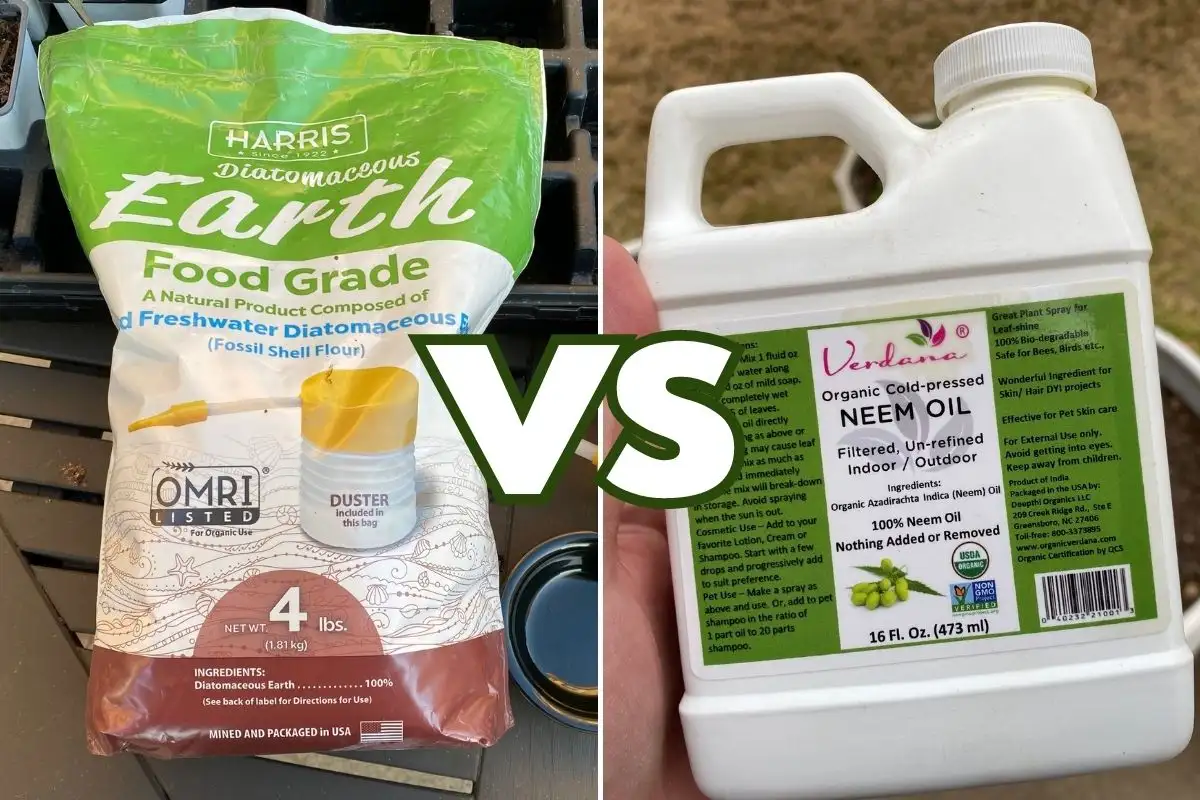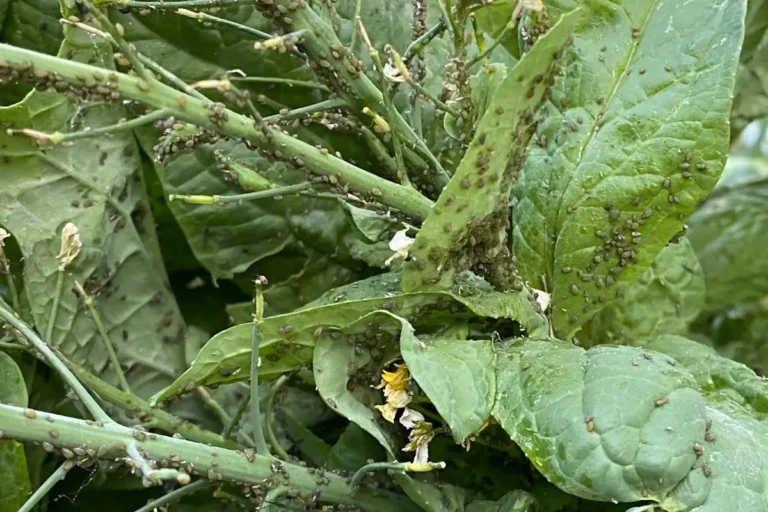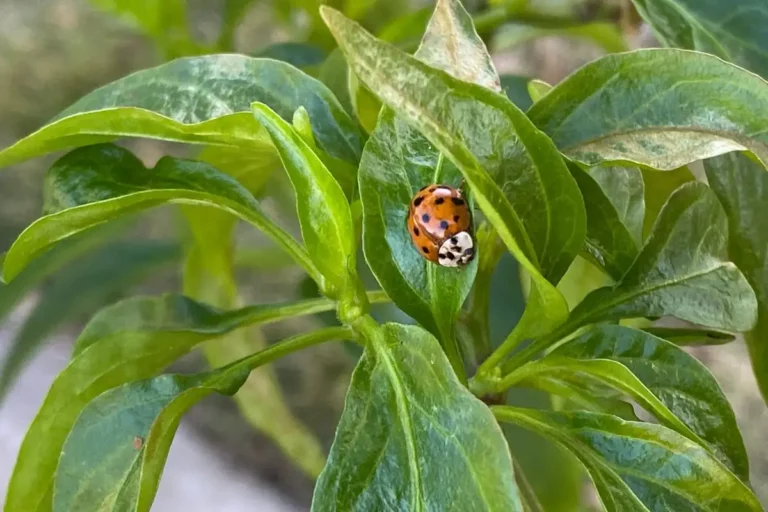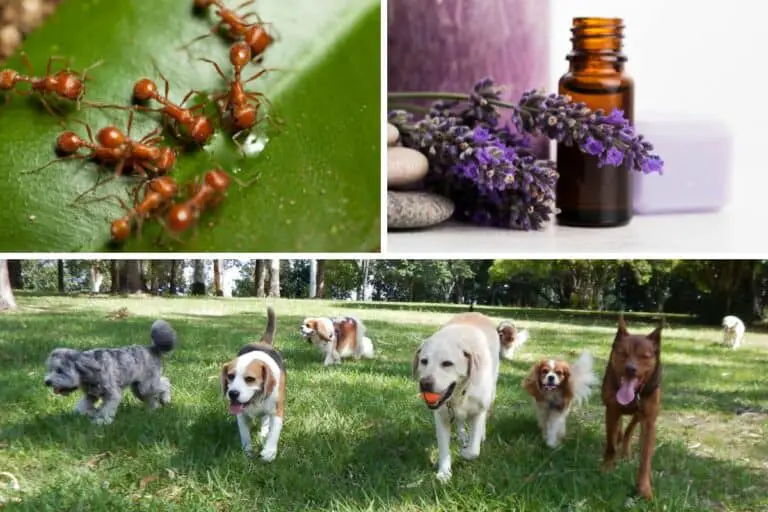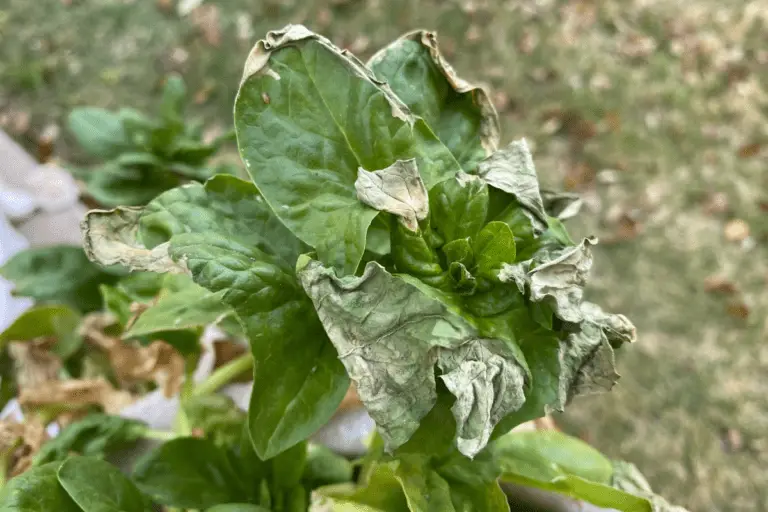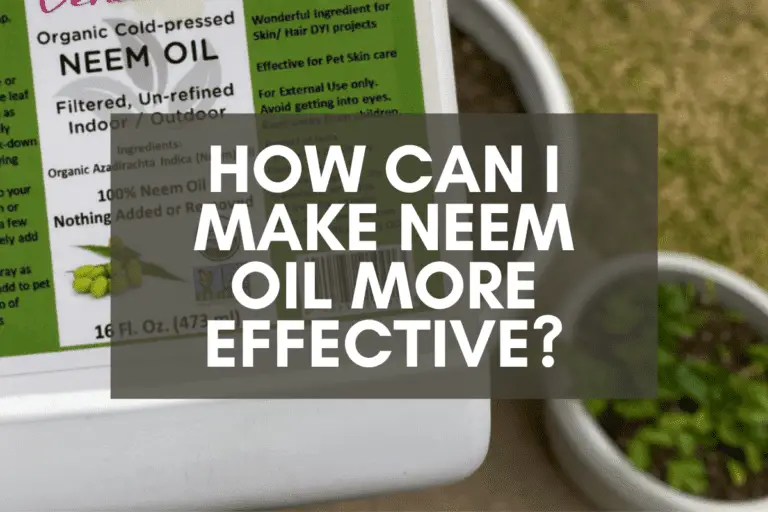Diatomaceous Earth vs. Neem Oil: Which Should You Use?
As a longtime gardener, I always look for natural ways to keep my plants healthy and pest-free.
Two popular options are diatomaceous earth (DE) and neem oil. Both are natural and effective, but they work in different ways and are better suited for different types of pests.
Diatomaceous earth is a fine yet abrasive powder that dehydrates insects by absorbing oils and moisture from their exoskeletons. Neem oil, on the other hand, is extracted from neem trees and contains azadirachtin, a natural insecticide that disrupts the life cycle of many destructive garden pests.
Simply put, both options are effective for natural pest control, but they work in different ways.
Diatomaceous earth is best for insects with exoskeletons, while neem oil is best for insects that feed on plant tissue.
In this article, I’ll do in-depth comparisons of DE and neem oil and explain why you might choose one over the other. In particular, I’ll look at the pros and cons of each product and share insights about their effectiveness, safety, cost, and ease of use.
Here’s a summary of what I’ll cover below:
- Diatomaceous Earth: what it is, how it works, and pros and cons
- Neem Oil: what it is, how it works, and pros and cons
- Comparison: use against different types of pests, suggestions for proper use and storage, and mistakes to avoid
- Dual Approach: using diatomaceous earth and neem oil together in your garden
Both DE and neem oil are incredible natural insecticides, and by the end of this article, you’ll have a better understanding of when to use one over the other in your garden.
Diatomaceous Earth: What It Is and What It Does
Diatomaceous earth (DE) is a natural pesticide that’s grown in popularity over the past 10-15 years. It’s made up of ancient diatoms, siliceous single-celled algae that, when fossilized, turned into a sedimentary rock that was later dug up and ground into a fine powder.
DE is effective against many insects, from ants and aphids to leafhoppers, thrips, and whiteflies.
(See the table below if you’d like to see a full list of garden pests that DE will hinder or harm.)
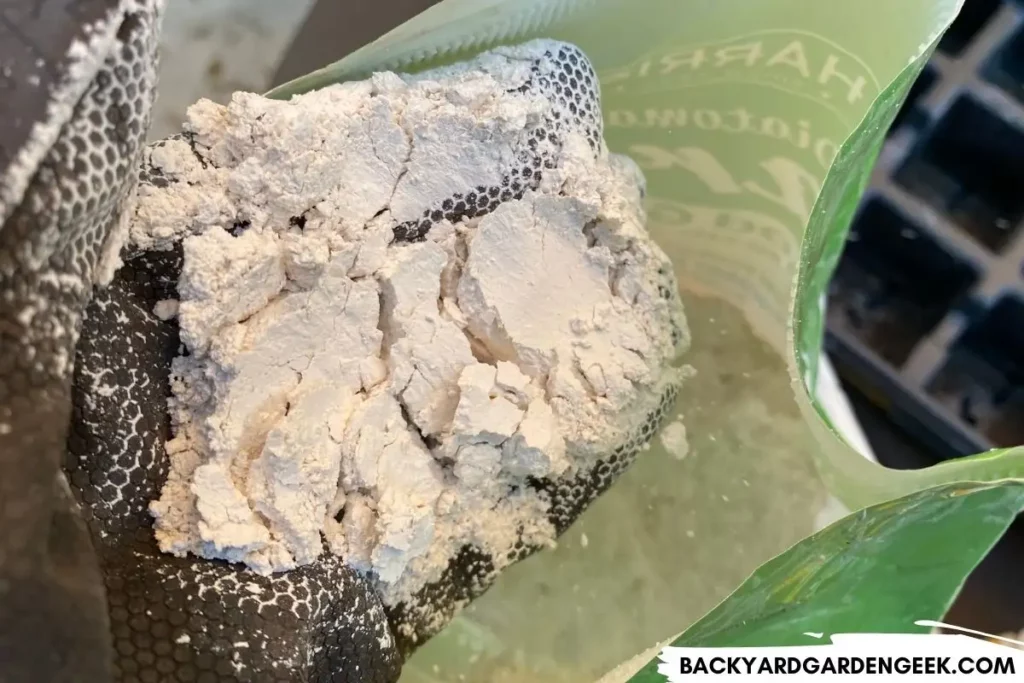
DE’s effectiveness can be attributed to 2 primary characteristics:
First, DE is highly absorbent, so as soon as an insect comes into contact with it, the DE will suck up whatever liquid or moisture it can from the insect’s body.
As researchers at Oregon State University have noted, DE is particularly effective at absorbing any oils or fats found around the insect’s cuticle, which dehydrates the insect.
Second, despite looking and feeling like flour, DE is quite abrasive for little insects since it’s primarily silica. For them, DE isn’t floury. It’s sharp and deadly. It can even cut insects and absorb even more of their liquids, dehydrating them further and killing them off.
What’s nice about DE is that it’s an organic, non-toxic way to handle garden pests, but there are some downsides as well, so let’s take a look at the pros and cons of using diatomaceous earth in your garden.
Here are reasons why DE is a great addition to your pest management system:
| Effectiveness | DE is highly effective at killing insects with exoskeletons. It works quickly once they come into contact with it. |
| Safety | DE is non-toxic and safe for humans and pets. It’s also safe for the environment, so some people use it as a partial soil amendment. |
| Cost | DE is relatively inexpensive and can be purchased in large bags. I prefer the Harris food-grade version. It’s always worked great for me! |
| Ease of Use | DE is pretty easy to apply as long as you’ve got a nice bulb duster like the kind sold by Dr. Killigan’s. The plastic ones don’t work as well. |

And here are some potential downsides of DE:
| Effectiveness | DE doesn’t work that well against slugs and snails, and unfortunately, it’ll kill off beneficial insects if you’re not careful. And if it rains outside, you’ve got to reapply it since rain will render DE practically worthless for pest control. |
| Safety | While DE is generally safe, you shouldn’t inhale it or get it in your eyes. You should wear protective gear when applying DE, especially if it’s an even slightly windy day. |
| Cost | DE is relatively inexpensive, but it’s not nearly as cost-effective as soapy water sprays because it needs to be reapplied often. |
| Ease of Use | DE can be rather messy. You should wear protective gear, and you might want to slip on a pair of gloves as well. |
When using DE in the garden, you need to take care and apply it sparingly to avoid killing beneficial insects. But in general, DE is not going to harm your plants.
In an article on whether you can put too much DE on your plants, I noted one exception: If a plant has a major infestation of a pesky bug like flea beetles.
Flea beetles are tough to get rid of once established, and I’ve found that soapy water and neem oil sprays don’t take care of them. If you’ve got a large infestation, I recommend dusting your plant with lots of DE.
A powder duster, such as Dr. Killigan’s bulb duster, can be used to apply the powder directly to areas where there is a particularly bad infestation (or to the entire plant if flea beetles are everywhere!).
If rain is in the forecast, wait to apply DE as it will need to be reapplied afterward. I’d also recommend applying DE in the early evening to avoid dusting any beneficial pollinators with it.
Overall, DE is a safe and effective natural pest control option for those looking to avoid harmful chemicals, especially when used against the right kinds of garden pests.
Neem Oil: What It Is and What It Does
Neem oil is a natural pesticide derived from the seeds of the neem tree (Azadirachta indica), a tree that’s native to India and has been used for centuries for both pest management and its medicinal properties.
Neem oil is effective against a wide range of insects—including aphids, mealybugs, spider mites, and whiteflies—because it contains azadirachtin. This natural insecticide disrupts the life cycle of pests when ingested.
If you’ve never used neem oil before, don’t worry. It’s easy to use once you know how it works. Here are a few articles I’ve written in case you’re new to neem oil:
- 9 Reasons Your Neem Oil Might Not Be Working
- How Can I Make Neem Oil More Effective? My 10-Step Process
- How Long Does It Take for Neem Oil to Kill Bugs?
- How Long Does Neem Oil Last? A Complete Shelf Life Guide
To keep things as simple as possible, I’ve listed some of the overall pros and cons of using neem oil below.
Here are the reasons why neem oil is great to use against garden pests:
| Effectiveness | Neem oil is highly effective at killing a wide range of pests but only if stored properly and used as directed. In general, it works by disrupting insects’ life cycles, interrupting their feeding habits, and preventing them from reproducing. |
| Safety | Neem oil is non-toxic, safe to use on your garden plants, and harmless when it comes to your furry friends (as long as they don’t ingest it in its concentrated form). It is also safe for the environment and does not harm beneficial insects. |
| Cost | Neem oil is relatively inexpensive. 1 bottle typically lasts me an entire growing season, sometimes even longer. |
| Ease of Use | Neem oil is easy to apply, but it’s possible to apply too much or spray your plants at the wrong time, which can cause plant burn. You can always wash neem oil off if you think you’ve applied too much. |
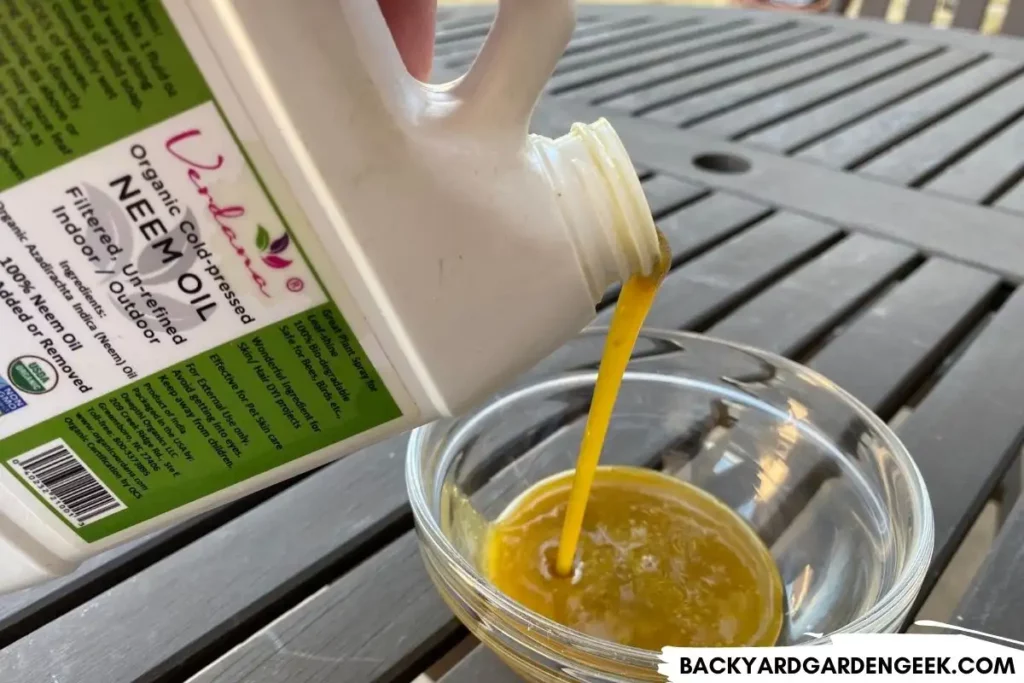
Unfortunately, you’ll find some downsides to neem oil as well:
| Effectiveness | Neem oil is not very effective against hard-bodied pests such as beetles, leaf-footed bugs, roaches, and squash bugs. It’ll also require several days for it to take effect. |
| Safety | While neem oil is generally safe, it can be harmful if ingested or if you get it in your eyes. If you spray your plants with it during the morning or afternoon hours, you might burn their foliage, and there are some plants you shouldn’t spray with neem oil since they’ve got delicate leaves. |
| Cost | While neem oil is relatively inexpensive, it’s more costly than soapy water sprays, and you’ll need to reapply it once every 4-7 days for particularly challenging infestations. |
| Ease of Use | Neem oil needs to be mixed with water and used within 8 hours of mixing. It may also take several days for it to take effect. |
When using neem oil in my garden, I always apply it in the late afternoon or early evening since spraying during the day can burn your plants.
(I learned that the hard way a few years ago, so I’m very careful now!)
You’ll need to use your neem oil spray within 6-8 hours of mixing it with water. I think it’s best to mix it in a 1/2-gallon or 1-gallon sprayer, depending on the size of your garden. Don’t store the leftovers. You can instead safely pour them out on your compost bin or even use the leftover solution as a soil drench.
It’ll take several days for neem oil to take effect, so be patient and continue to apply as needed. If you’ve got a bad infestation, I recommend spraying your plants with a soapy water spray once each day for several days following a neem oil application.
Overall, neem oil is a safe and effective natural pest control option if you’re looking to avoid harmful chemicals, particularly if you’ve got pests in your garden that feed on plant tissue.
What Bugs Do DE and Neem Oil Get Rid Of?
Now that you’ve got a general sense of what DE and neem oil are and what they do, here’s a helpful table showing which bugs they work best against.
As always, please experiment with different pest solutions, but in general, I’ve found that DE and neem oil can help out with these garden pests:
| Diatomaceous Earth | Neem Oil |
|---|---|
| Ants | Aphids |
| Aphids | Armyworms |
| Armyworms | Beetles (larvae only) |
| Beetles | Caterpillars |
| Cabbage Loopers | Leaf-footed Bugs (nymphs only) |
| Cockroaches | Leafhoppers |
| Cucumber Beetles | Mealybugs |
| Earwigs | Psyllids |
| Flies | Scales |
| Leaf-Footed Bugs | Spider mites |
| Leafhoppers | Squash Bugs (nymphs only) |
| Slugs (slows them down) | Stink Bugs (nymphs only) |
| Snails (slows them down) | Thrips |
| Spider Mites | Whiteflies |
| Silverfish | |
| Stink Bugs | |
| Thrips | |
| Whiteflies |
Please note that, unlike neem oil, DE can harm beneficial insects like bees, butterflies, ladybugs, pill bugs, and spiders.
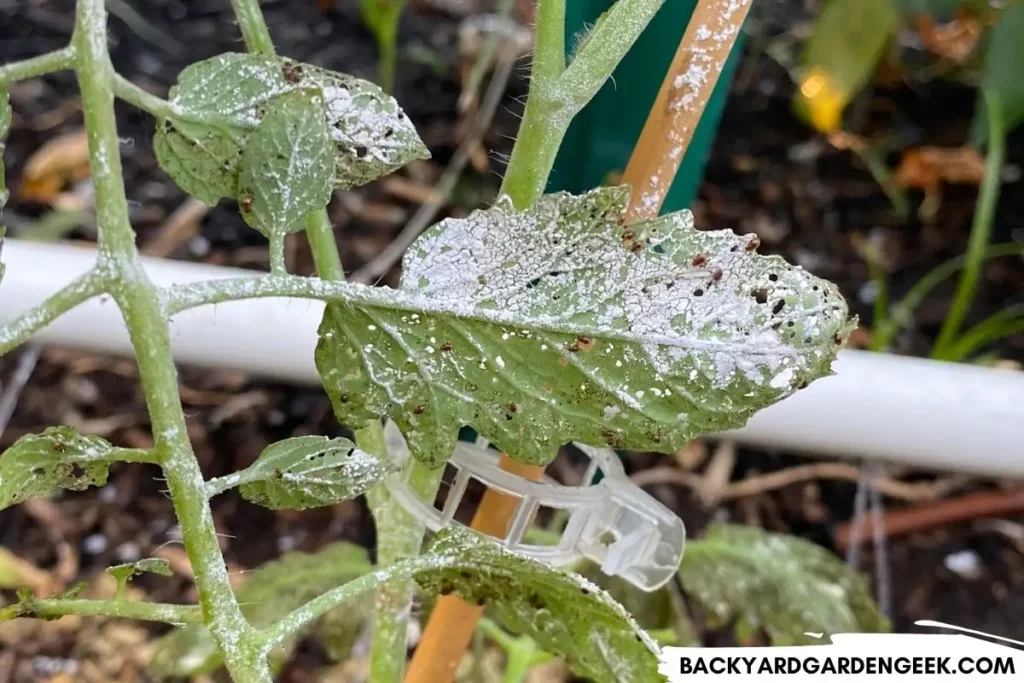
It doesn’t typically kill slugs and snails, but it’ll certainly slow down their destruction. Neem oil won’t slugs or snails either.
If you’ve got beneficial bugs on your plants, you might want to go with neem oil instead of DE. Just be sure to wait until late in the day to spray your plants, which should help you avoid spraying pollinators with it.
Whenever you use DE or neem oil, you need to use these products with care and only apply them to areas where targeted pests are present.
Can I Use Diatomaceous Earth and Neem Oil Together?
Using diatomaceous earth and neem oil together can be an effective approach for natural pest control in the garden. By incorporating both products into your pest management routine, you can target pests from multiple angles and enhance the overall effectiveness of your efforts.
Here’s a suggested method for using DE and neem oil as companion products in your garden:
- Before spraying your plants with neem oil, I think it’s best to use a soapy water spray to provide some immediate relief for your plants. To make the spray, mix 5 tablespoons of Dr. Bronner’s peppermint castile soap with 1 gallon of water. Thoroughly spray the undersides of all leaves and other affected areas. The soapy water helps to suffocate any pests already present on your plants. Do this on Day 1.
- On Day 2, once the soapy water spray has had time to take effect and dry, it’s time to apply neem oil. Neem oil can be mixed with water according to the instructions on the product label typically 2 tablespoons per gallon plus 1 tablespoons of castile soap as an emulsifier. Using a sprayer, thoroughly spray your plants in the early evening, making sure to cover all surfaces, including the undersides of leaves. Neem oil disrupts the pests’ life cycle and acts as a repellent, further deterring them from infesting your plants.
- On Day 3, after your neem oil has dried, apply a light layer of diatomaceous earth to areas where pests are particularly concentrated. Use a powder duster or similar applicator to ensure an even and controlled distribution. Focus on the affected plant parts or areas with high pest activity.
- Repeat this process once per week or as necessary, depending on the severity of your pest infestation. Monitor your plants regularly and reapply the soapy water, neem oil, and diatomaceous earth when you notice signs of pest activity.
By combining the strengths of soapy water, neem oil, and diatomaceous earth, you create a comprehensive approach to pest control.
Soapy water suffocates any soft-bodied pests, neem oil acts as a deterrent and disrupts the pests’ life cycle, and diatomaceous earth provides physical protection by dehydrating and eliminating pests.
This dual approach helps to address a wider range of pests effectively, but please remember to follow all product instructions and consider conducting a test on a single plant before applying these products extensively.
With proper application and consistency, the combination of DE and neem oil can contribute to a healthier and pest-free garden. Good luck!
Further Reading
If you’ve liked reading about DE and neem oil, you might be interested in these related articles:
- 5 Reasons to Mix Diatomaceous Earth with Soil
- Can Diatomaceous Earth Harm Plants? What Scientists Say
- Can You Put Too Much Diatomaceous Earth on Plants?
- Using Diatomaceous Earth: Do I Need to Wear a Mask?
- Using Diatomaceous Earth as a Fertilizer: Will DE Help?
- Will Neem Oil Kill Earthworms? Scientists Weigh In
